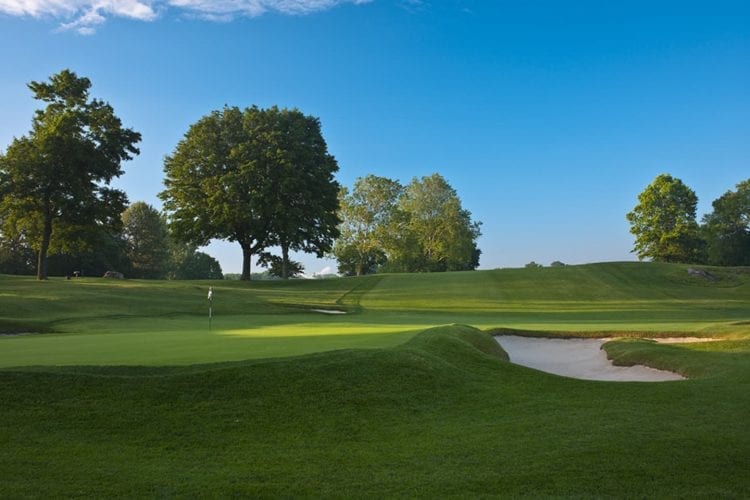
Measuring a mere 6,702 yards, Wykagyl Country Club does not intimidate on paper, but since it was built more than a century ago, its relentlessly hilly, rocky terrain has provided a worthy challenge for the game’s best. And if not for a location in the heart of New York’s golf-rich Westchester County, where neighbors like Winged Foot and Quaker Ridge cast long shadows, this stellar layout that plays much harder than it appears would be considered among the country’s best.
When a need to replace an antiquated irrigation system led to the consideration of a restoration, the club contacted numerous architects, including the noted minimalist duo of Bill Coore and Ben Crenshaw. Although their company rarely accepts existing course projects, the opportunity to work on Wykagyl Country Club was too good to pass up.
It wasn’t the course’s first renovation. In fact, the history of Wykagyl is one of change. Founded as the nine-hole Pelham Country Club in 1898, the club moved to its current location in New Rochelle in 1905 and received a new name based on a Native American tribe that once lived in the area. (The current Pelham Country Club, nearby, was founded in 1908.)
The layout itself has seen a who’s who of golf architects during the 20th century, but the touch of three men have had the largest impact. Greens on the 1st, 7th, 9th and 16th holes remain essentially the creations of member Lawrence Van Etten, who designed a 6,326-yard layout. Van Etten built three consecutive par 3s: the 5th, 6th and 7th. Thirteen years later, Donald Ross created two par 4s to replace the 5th and 6th holes. Just over a decade after that, A.W. Tillinghast implemented dramatic changes, namely a rerouting that largely survives today. He eliminated the 1st and 2nd holes, built the current 4th, 5th, 6th and 11th holes, reversed the dogleg on No. 17 from right to left and substantially shortened the 18th, turning it from a par 5 into a two-shotter.
Coore’s work, undertaken during the last half of 2006, was aimed at subtly recapturing visually dramatic aspects that had faded over time, as well as renovating bunkers to make them more indicative of the look and feel from years past.
While the routing is the same, numerous holes have changed. The best example is the controversial par-3 7th, 172 yards to what Coore calls the “most severely tilted green I have ever seen.” He regraded the green, turning what was a marginally unplayable putting surface into a marginally playable one, where good putts should at least stay on the green.
The following hole, a 452-yard par 4, remains a sharp dogleg left. But three new fairway bunkers offset the loss of a 100-foot oak, which often blocked approaches from the left side of the fairway. The tree, estimated to be more than 200 years old, succumbed to disease.
Coore believes the new playing options created by the project will reveal the character of Wykagyl, rather than change it. “If they had said to just add 700 more yards to the course, we would have said that we’re not very good at that and you should really probably talk to someone else. It would never be our intent to go to a club like Wykagyl and walk away trying to leave such an imprint that the course would be unrecognizable.”






